Files
for all the artists out there, here are my favorite resources i use to learn!
Files
The Complete Famous Artist Course
Art Books and Resources
Art, Anatomy, and Color Books
PDF Files of Art Books
Internet Archive
YouTube
My YouTube Playlist of Tutorials
How to Draw Facial Features
Drawing and Art Advice
Drawing Lessons
Art Fundamentals
Anatomy of the Human Body
2D Animation
Perspective Drawing
Websites
Pinterest Board for Poses
Another Pinterest Board for Poses
Pinterest Boards for References
Reference Angle
AdorkaStock
Figurosity
Line of Action
Human Anatomy
Animal Photo References
Humanae - Angélica Dass
Fine Art - Jimmy Nelson
Character Design References
CDR's Twitter Account
iamagco's Twitter Account
taco1704's Twitter Account
takuya_kakikata's Twitter Account
EtheringtonBro's Twitter Account
Drawabox
Color Wheel
Color Palette Cinema
Free Images and Pictures
Free Stock Photos
FILMGRAB
Screen Musings
William Nguyen Light Reference Tool
SketchFab - 3D Skeleton Model
Animation References - sakugabooru
Animation References - Bodies in Motion
More Posts from Malcontentmoon and Others






[ID in alt]
Tutorial on drawing characters/OCs who have some sort of facial paralysis. It doesn't cover all possible variants because I was using mirror as my main reference lawl
Keep in mind that this is an introductory drawing tutorial and has some generalizations in it, so not every “X is Z” statement will be true for Actual People 👍
Consider supporting me on ko-fi if you find this to be helpful.
I forgot I have to be active here so here’s my Twitter tutorial on how to draw folds I made a while back to help a friend!






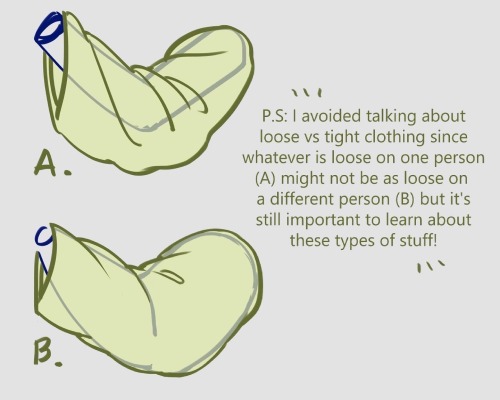

HEY THIS IS IMPORTANT whats your favorite place to find drawing references?
Tips for Illustrators (and other artists too!)
I’m an illustration major at MICA (please check out my blog here as a way to support me for making this post!), so this is catered towards what I learned in my illustration critiques and from professional illustrators. I think these tips can go for other artists too, though!
None of these are things that work all the time, but they’re general “rules” I’ve been taught. You can break them, just know why you’re doing so! These are just things I copied from my critique notes, so most are general tips I’ve heard and copied down.
General
Enjoy what you’re working on, but be okay with changing it.
Anatomy, and accurately trying to portray it, is really important.
Time and space can be portrayed through focus and distance.
When working digitally, make some of your own textures (traditionally) and scan them in. Adding them into a picture adds an element of your own hand and makes your work stand apart from other digital work.
Contrast is a great thing.
Saturation is a great thing, especially in watercolor (soak that brush with pigment!).
Your style should never draw an obscene amount of attention to itself; it should just work fluidly.
Consider what medium(s) work best for your idea.
Cover your paint palettes (particularly reusable ones) to make sure dust doesn’t get in the paints.
Spin the page when you’re working. The time is takes to do that will show some major improvement in your art!
Use dark watercolor and then a light colored pencil on top, never the other way around (it will look muddy and ruin clarity).
Make sure to sometime pin or place you piece far away and step away so you can see the whole composition (or zoom out a lot digitally).
Consider the genre and audience of what you’re working for (and if it’s yourself, then you’re your own audience!).
Illustration is a branch of fine art, don’t forget that.
Fantasy art usually needs a lot of high detail.
Coloring
Pick an overall color palette to work in, then add in other colors as needed.
Complementary colors (ones opposite on the color wheel), when placed next to each other, can pop an object forward or draw attention to it. (Think of a red ornament on a green Christmas tree).
Designate the shadows to be either warm or cool, and the highlights to be the opposite. Stay with this throughout the entire picture.
All colors have a warm and a cool hue (cool and warm blues, cool and warm oranges).
The more saturated a color is, the more it will pop forward in the picture plane.
Don’t use colors right out of the paint tube.
When making a shadow, tint the color with the complementary tone (it makes it a little more grey).
Colorizing backgrounds lines makes them recede in a colored image with line art.
Blue and pink tones are great for use in skin tones.
Flats need to be fairly differentiated colors.
Drawing
The reference should never be an excuse for a misleading or awkward pose. You have the artistic license to alter an awkward pose and not just draw from a photo.
With scratchy or textured line art, find some places of solid black too, to allow the eye to rest (or where you want something to pop out).
How you render all the elements of the picture is what makes your own individual style.
When something is illuminated, it should be the brightest part of the composition.
Anything with a straight angle (like the corner of a room) has one wall/side being lighter in value than the other. There is a crisp distinction.
Sometimes adding more lessens the strength of the image.
Fabric folds are crisp, if they’re too soft they’ll look like clay.
Line heaviness and weight can determine depth.
Anatomy/Characters
Anatomical consistency is very important.
Inside of the mouth is usually dark.
Show character motivations with actions and poses.
You can crop a face or figure to set a mood.
In any and every picture, pay special and close attention to the hands, feet, and face.
Learning musculature, even if you use reference, will help you create the body you want for your character. Understand the human form…it’s easier to alter if you understand it in the first place.
To pop a figure forward, add a little bit of rim lighting (great with backlighting).
Composition
Avoid spots where a line or shape comes really close, but doesn’t cross, the edge of the paper. This is called a tangent and tangents are bad (they suck the eye into just that one spot and stop the composition).
Nothing in the picture is accidentally there, it is all drawn by you, so make sure everything has a conscious placement.
Don’t crop anything that shows essential character expression (including essential parts of the pose).
Never crop a figure at a joint (it makes the limb look amputated unintentionally).
Consider how you show detail with smaller characters…what are the essential characteristics?
Shapes of color or tone can make great framing devices.
For the most part, render the foreground with more clarity than the background…you want atmospheric perspective to be used to make it look like it’s receding.
Line heaviness/weight can combat (in a good way) any very dark areas.
When the character breaks a border (shape, line, panel etc), it shows dominance.
Make the shape of your negative space visually interesting.
“Cornerstops” are great. They are a compositional element that visually blocks your eye from running off the corner of a page.
Shadows can be a great compositional element.
Narrative Illustration (Portraying the narrative)
It is a successful illustration if the story is told.
Use every element of the image to tell the story.
Sometimes you have to take out elements you love for the sake of storytelling.
Think of images as being fast/slow, quiet/loud. What techniques portray these senses for you, and why are you using such techniques? What areas of the picture are slower and faster, why those areas?
Indicate how lavish or simple a place is by the details you choose to include in the background.
Don’t make it obvious that you “curated” the picture; it should look natural.
Cover illustrations don’t always need big and bold text, as long as there’s a strong narrative being portrayed.
Something mid action carries the narrative better than pre or post action.
You should be able to tell a story without relying on text.
Sequential Art (Comics, etc)
Color between panels can draw the eye around the page.
Big jumps in narrative can add humor and excitement, just make sure to think of why you are having the jump there.
When starting a sequence, make it obvious where you start (establishing shot; biggest to smallest, etc).
Make sure panels can read as separate images even if you took the gutter away.
Smaller panels are frequently used for faster/quicker actions.
Removing the background in certain panels allows the scene to be read faster; you only need one background per page (unless the scene in the background is changing).
Style, readability, and timing are key things to keep in mind.
Does the punch line/climax happen at the right time on the page?
Before planning a page, ask yourself: “How much time is elapsing between the first and last panel?”
Consider panel shape and size.
The composition, and where the eye flows inside every panel, informs where the eye travels to next…compositionally lead the eye from panel to panel.
The more panels you have, generally the more time goes on.
Don’t rely on speed/action lines to make things dramatic.
Give word bubbles a little breathing room.
When doing a graphic novel, you’ll usually have to redraw the first few pages since the characters will come more naturally to you by the end pages.
There is a design element to sound effects.
Digital Art (Mostly Photoshop based, but some are general tips)
Before printing, you usually want to switch your file to CMYK (though save a file in RGB too). Print at 300 dpi.
Before printing, you can up the brightness, saturation and contrast until it just starts to look awkward. You’ll learn the best settings for the printer you print at.
Don’t place digital textures anywhere. Consciously arrange them.
Don’t overrender. Digital art tends to be the most successful when it feels less digital than someone would expect.
If your color scheme doesn’t look cohesive, you can use a fill layer of one specific color to unify everything (Layer->fill layer). Lower the opacity to around 15-30%.
For artists who have problems with perspective (furniture etc.) in indoor scenes like me - there’s an online programm called roomsketcher where you can design a house/roon and snap pictures of it using different perspectives.
It’s got an almost endless range of furniture, doors, windows, stairs etc and is easy to use. In addition to that, you don’t have to install anything and if you create an account (which is free) you can save and return to your houses.
Examples (all done by me):


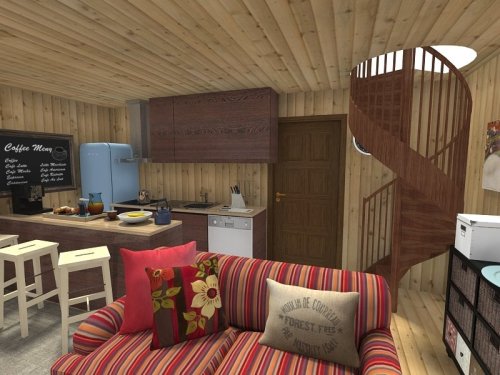
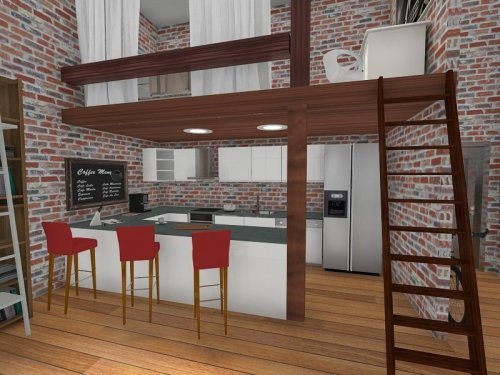
Here’s an example for how you can use it
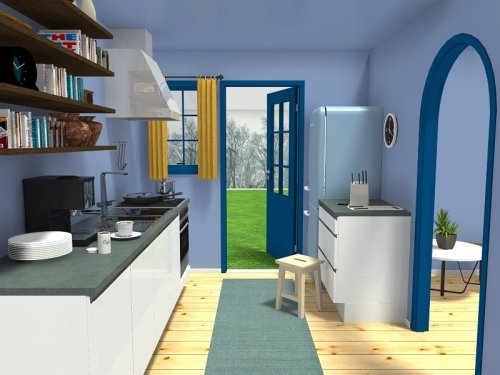

for those of you who remember cgtextures circa 2008, texture.ninja has a large repository of public domain textures without annoying hoops to jump through.

Drawing fat characters will make you a better artist, btw. Unironically, once you know how, you will not want to go back
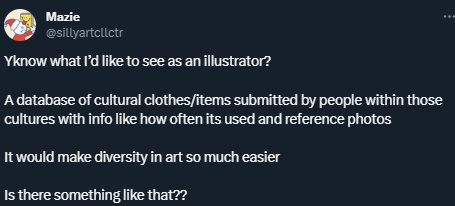
tweet
Something like this would be so colossally helpful. I'm sick and tired of trying to research specific clothing from any given culture and being met with either racist stereotypical costumes worn by yt people or ai generated garbage nonsense, and trying to be hyper specific with searches yields fuck all. Like I generally just cannot trust the legitimacy of most search results at this point. It's extremely frustrating. If there are good resources for this then they're buried deep under all the other bullshit, and idk where to start looking.
hot artists don't gatekeep
I've been resource gathering for YEARS so now I am going to share my dragons hoard
Floorplanner. Design and furnish a house for you to use for having a consistent background in your comic or anything! Free, you need an account, easy to use, and you can save multiple houses.
Comparing Heights. Input the heights of characters to see what the different is between them. Great for keeping consistency. Free.
Magma. Draw online with friends in real time. Great for practice or hanging out. Free, paid plan available, account preferred.
Smithsonian Open Access. Loads of free images. Free.
SketchDaily. Lots of pose references, massive library, is set on a timer so you can practice quick figure drawing. Free.
SculptGL. A sculpting tool which I am yet to master, but you should be able to make whatever 3d object you like with it. free.
Pexels. Free stock images. And the search engine is actually pretty good at pulling up what you want.
Figurosity. Great pose references, diverse body types, lots of "how to draw" videos directly on the site, the models are 3d and you can rotate the angle, but you can't make custom poses or edit body proportions. Free, account option, paid plans available.
Line of Action. More drawing references, this one also has a focus on expressions, hands/feet, animals, landscapes. Free.
Animal Photo. You pose a 3d skull model and select an animal species, and they give you a bunch of photo references for that animal at that angle. Super handy. Free.
Height Weight Chart. You ever see an OC listed as having a certain weight but then they look Wildly different than the number suggests? Well here's a site to avoid that! It shows real people at different weights and heights to give you a better idea of what these abstract numbers all look like. Free to use.

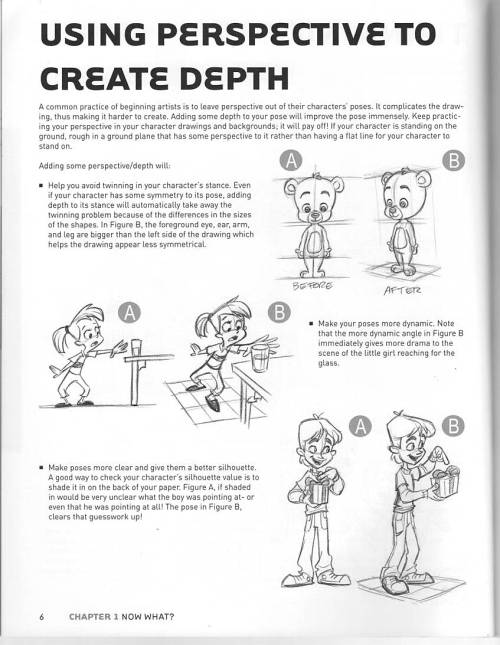
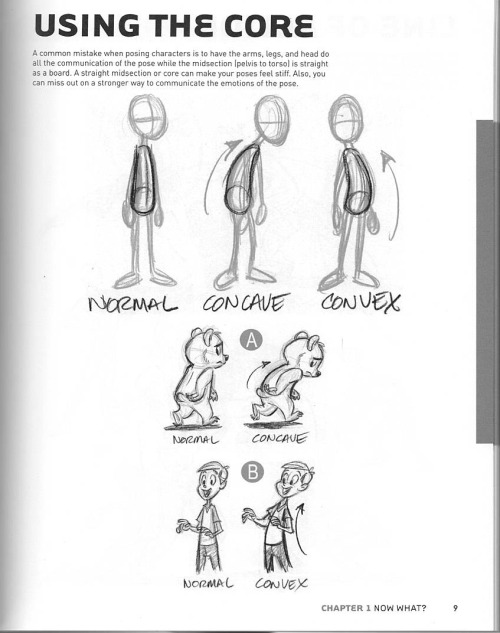
I’m not crazy, y’all. Dragonball Supers animation is bad on a basic level.
Not sure if the Animation Director or the story-artist is more at fault but regardless, the product is bad and someone should have known better.
(scans from the book “Character Mentor” by Tom Bancroft)
-
 themonsterundermybed reblogged this · 1 week ago
themonsterundermybed reblogged this · 1 week ago -
 themonsterundermybed liked this · 1 week ago
themonsterundermybed liked this · 1 week ago -
 oppa-homeless-style liked this · 1 week ago
oppa-homeless-style liked this · 1 week ago -
 merrietunes reblogged this · 1 week ago
merrietunes reblogged this · 1 week ago -
 merrietunes liked this · 1 week ago
merrietunes liked this · 1 week ago -
 morguemouth reblogged this · 1 week ago
morguemouth reblogged this · 1 week ago -
 m4yday-may liked this · 1 week ago
m4yday-may liked this · 1 week ago -
 corpse-rat reblogged this · 1 week ago
corpse-rat reblogged this · 1 week ago -
 corpse-rat liked this · 1 week ago
corpse-rat liked this · 1 week ago -
 6robotmonster6 reblogged this · 1 week ago
6robotmonster6 reblogged this · 1 week ago -
 6robotmonster6 liked this · 1 week ago
6robotmonster6 liked this · 1 week ago -
 rottingraw liked this · 1 week ago
rottingraw liked this · 1 week ago -
 zasneo reblogged this · 1 week ago
zasneo reblogged this · 1 week ago -
 zasneo liked this · 1 week ago
zasneo liked this · 1 week ago -
 kirbee-hd reblogged this · 1 week ago
kirbee-hd reblogged this · 1 week ago -
 tamatoes402 liked this · 1 week ago
tamatoes402 liked this · 1 week ago -
 faunamoth liked this · 1 week ago
faunamoth liked this · 1 week ago -
 you-might-be-able-to-pass liked this · 1 week ago
you-might-be-able-to-pass liked this · 1 week ago -
 theastralcoffee liked this · 1 week ago
theastralcoffee liked this · 1 week ago -
 flashyashley reblogged this · 1 week ago
flashyashley reblogged this · 1 week ago -
 flashyashley liked this · 1 week ago
flashyashley liked this · 1 week ago -
 shark-yeen liked this · 1 week ago
shark-yeen liked this · 1 week ago -
 baptism-inblood reblogged this · 1 week ago
baptism-inblood reblogged this · 1 week ago -
 baptism-inblood liked this · 1 week ago
baptism-inblood liked this · 1 week ago -
 ajatar liked this · 1 week ago
ajatar liked this · 1 week ago -
 knightssbane liked this · 1 week ago
knightssbane liked this · 1 week ago -
 galvanismgal liked this · 1 week ago
galvanismgal liked this · 1 week ago -
 l3monlem0n reblogged this · 1 week ago
l3monlem0n reblogged this · 1 week ago -
 renecatstuff reblogged this · 1 week ago
renecatstuff reblogged this · 1 week ago -
 themightyqworks liked this · 1 week ago
themightyqworks liked this · 1 week ago -
 zombiedoggy liked this · 1 week ago
zombiedoggy liked this · 1 week ago -
 aeloheart reblogged this · 1 week ago
aeloheart reblogged this · 1 week ago -
 thisisnoplaceofhonour reblogged this · 1 week ago
thisisnoplaceofhonour reblogged this · 1 week ago -
 thisisnoplaceofhonour liked this · 1 week ago
thisisnoplaceofhonour liked this · 1 week ago -
 hahahahahhblablabla liked this · 1 week ago
hahahahahhblablabla liked this · 1 week ago -
 tarafyinglylucky liked this · 1 week ago
tarafyinglylucky liked this · 1 week ago -
 spookycereals liked this · 1 week ago
spookycereals liked this · 1 week ago -
 as-if-bruh liked this · 1 week ago
as-if-bruh liked this · 1 week ago -
 veritablyconfused liked this · 1 week ago
veritablyconfused liked this · 1 week ago -
 fogpowers liked this · 1 week ago
fogpowers liked this · 1 week ago -
 mmyntho reblogged this · 1 week ago
mmyntho reblogged this · 1 week ago -
 mmyntho liked this · 1 week ago
mmyntho liked this · 1 week ago -
 tiadora liked this · 1 week ago
tiadora liked this · 1 week ago -
 ethanmorningstar liked this · 1 week ago
ethanmorningstar liked this · 1 week ago -
 haphira reblogged this · 1 week ago
haphira reblogged this · 1 week ago -
 haphira liked this · 1 week ago
haphira liked this · 1 week ago -
 eterniteeth reblogged this · 1 week ago
eterniteeth reblogged this · 1 week ago -
 owlbats liked this · 1 week ago
owlbats liked this · 1 week ago -
 trashwizzard liked this · 1 week ago
trashwizzard liked this · 1 week ago
